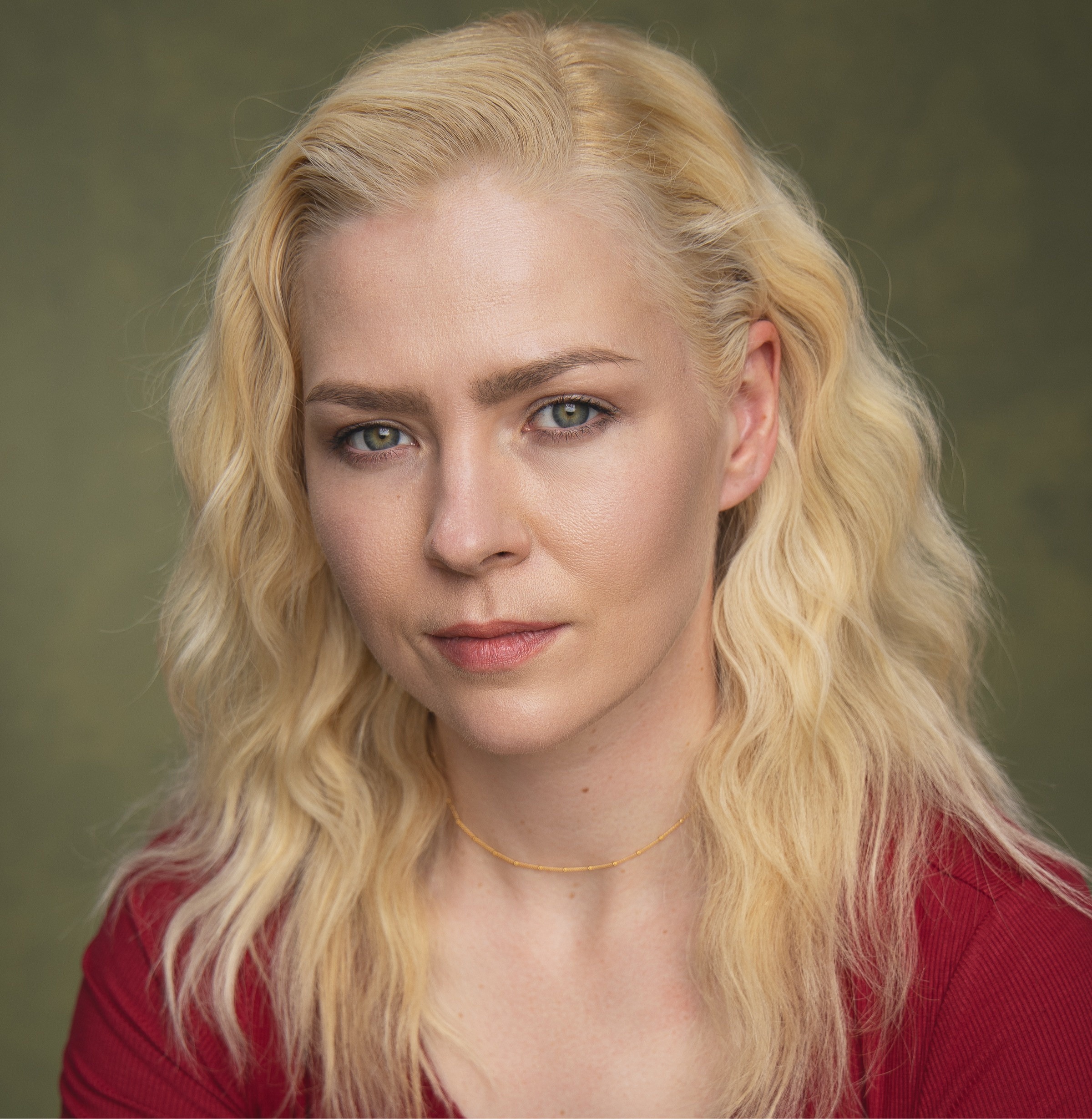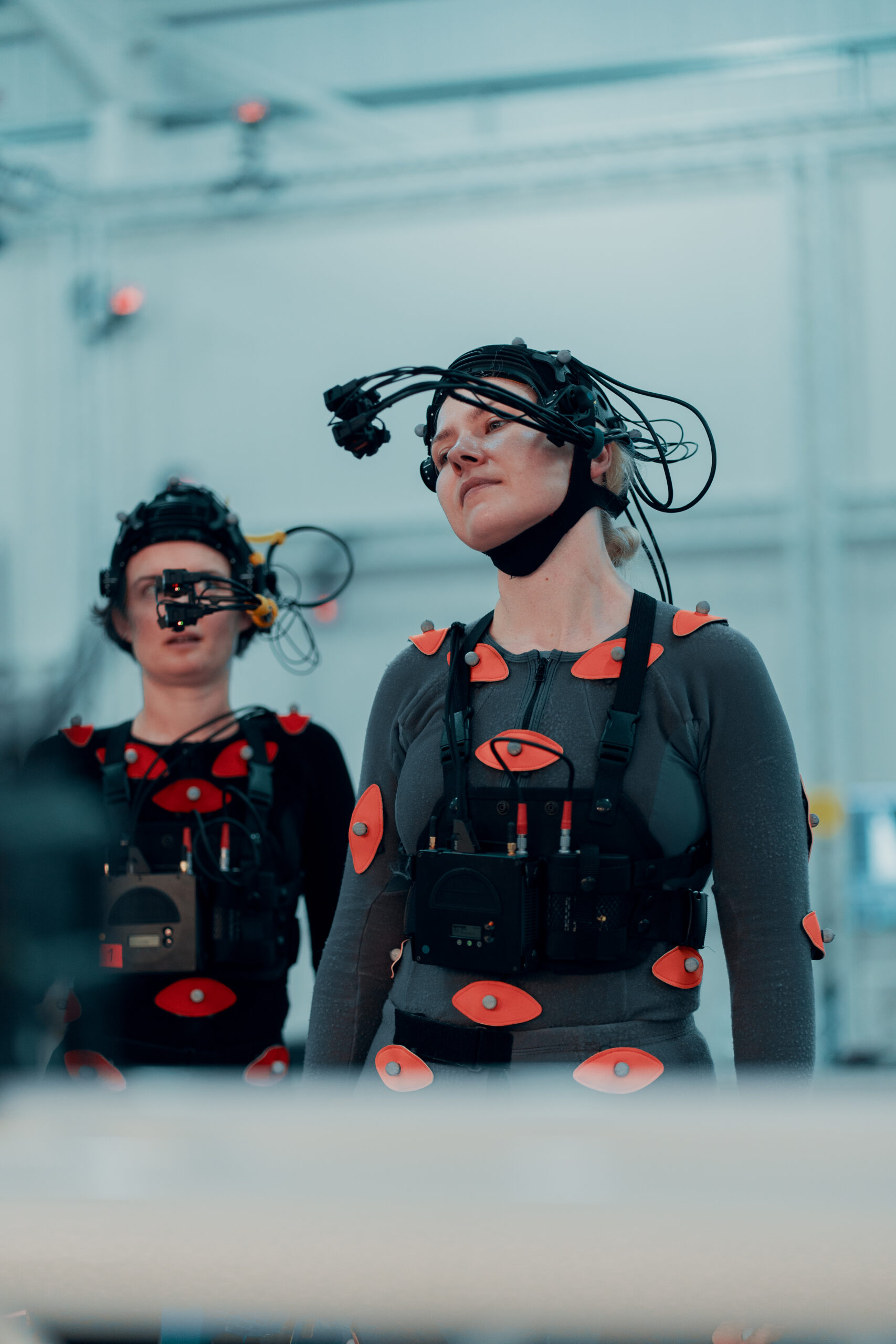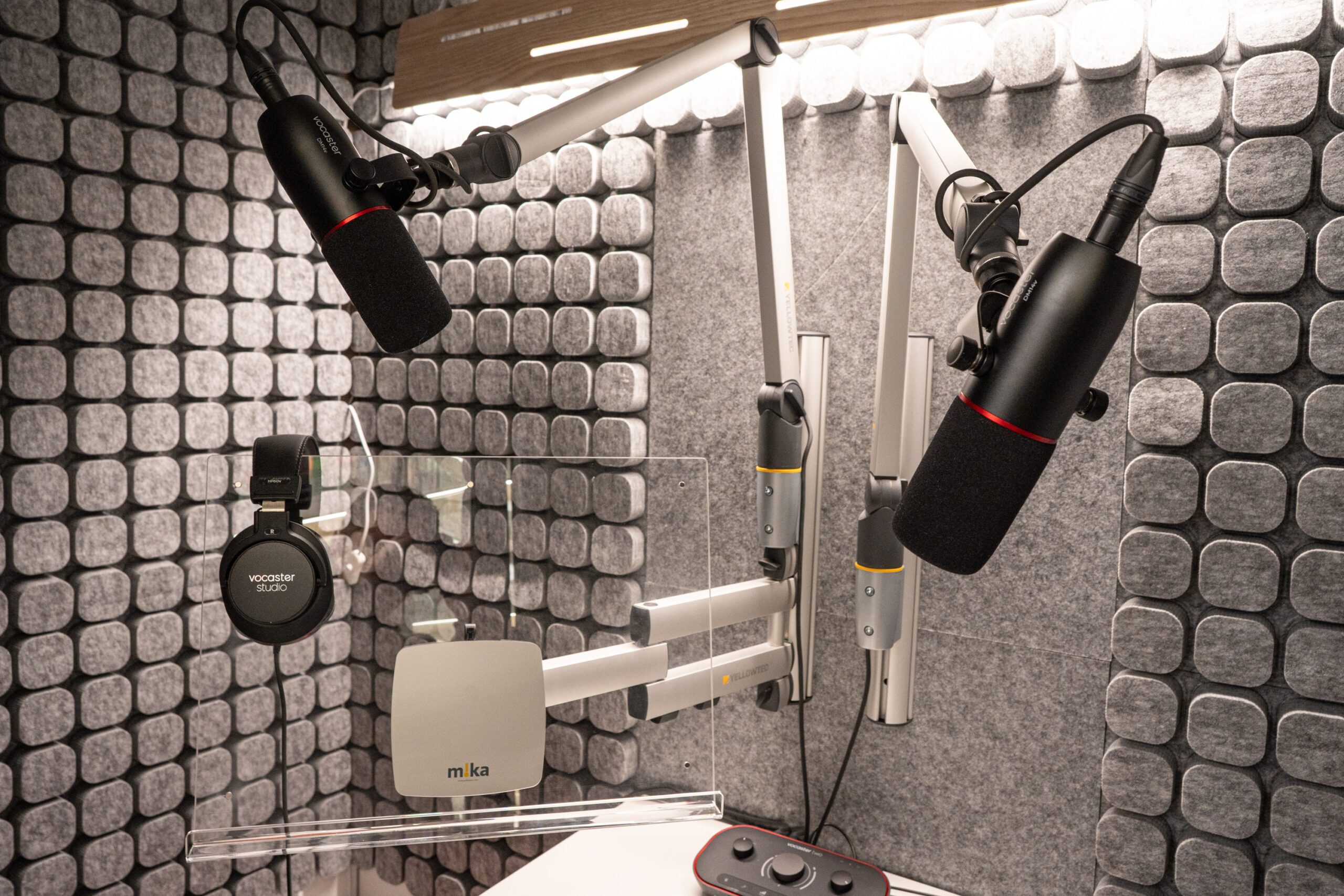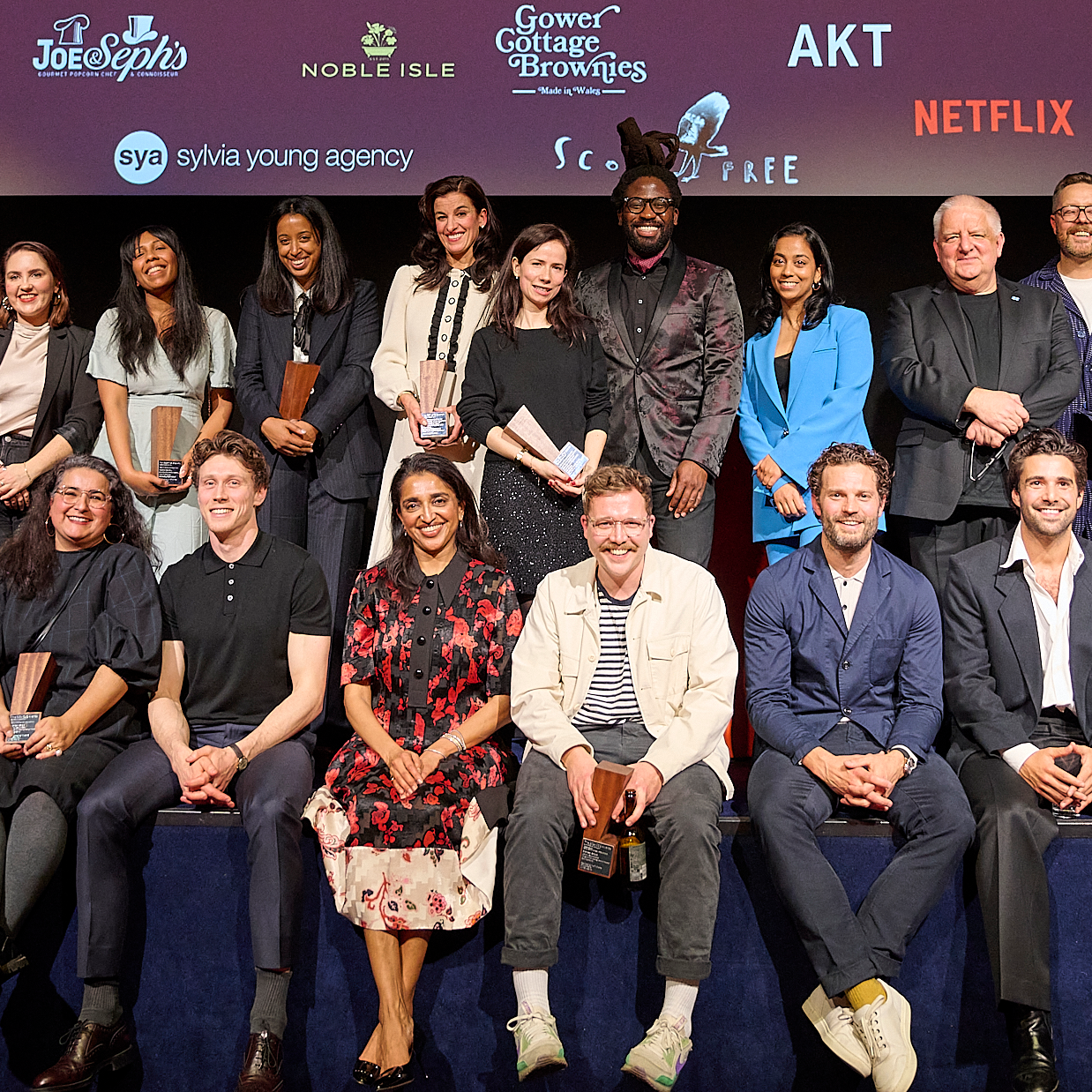Voice and motion capture artist Marta Svetek tells us what to expect during voiceover and mocap auditions for video games and how she landed her role in ‘Five Nights at Freddy’s: Security Breach’.
Video games have come a long way since Pong and Tetris. They’re now so creative, so technologically advanced and so full of talented performers that they’re giving films and TV a run for their money. It’s no wonder that so many actors are turning their attention to this innovative industry as a new source of interesting and well-paid jobs.
Voice and motion capture actor Marta Svetek made a name for herself in this industry before the roles became so widely sought after. She has worked on a variety of exciting games, such as VALORANT, Battlefield 2042, Destiny 2, Horizon Forbidden West, Aliens: Dark Descent, Total War: Warhammer III – Immortal Empires and several games in the Five Nights at Freddy’s franchise, which has single-handedly brought about the popularity of ‘mascot horror’ as a game genre.
We had the chance to speak to Marta about all the amazing work she’s done, including how she became a part of Five Nights at Freddy’s: Security Breach and what actually happens during voice and motion capture work for video games. Here’s what she shared:
Hi Marta! How did you first get started in your voice acting career?
I had a very unusual route into it. I had given up on the idea of being a professional actor years ago. I’m originally from Slovenia – a country of two million people. There’s not that many people to come see you. I never went to drama school. My entire life, I just acted for fun.
At one point in my corporate job, we were working on an international e-learning campaign, and we needed somebody to do the voiceover for the pilot animation. So they said, “Marta, you have a neutral accent. Why don’t you do it?”
So it was late at night in the office, and I’m there with a Snowball mic and a coat over my head with a little MacBook going, “Hi, welcome to blah, blah, blah.”
The clients really liked it, so for the next five weeks, I ended up recording the entire campaign.
About the same time, that corporate job had a little campaign internally. They gave us £100 per quarter to go do a course and report back. I decided that I wanted to do an intro to mocap class quite simply because I liked games and Lord of the Rings. And it just kind of clicked.
I was also quite active as a kid. I did ballet, martial arts and was a competitive swimmer, so I had quite a lot of physical skills that translated to motion capture and, to be honest, good body awareness. Around that same time, the Mocap Vaults had started their Intro to Mocap courses. It all came together and I was like, “Okay, I’m hooked. This is it now.”
Do auditions and callbacks for voiceover vary much from standard auditions?
They’re very different. For voice, obviously you’re not on camera so you don’t need to learn your lines or be off-book. You have the text in front of you – that’s a huge luxury. But also, you’re stripped of all of your other tools to portray something.
The auditions these days usually start with a self-tape at home. People still think you need this fancy setup, but what you really need is a decent mic and a reasonably sound-absorbent corner of the room. The inside of a wardrobe can work great! Avoid using your phone mic, but there are plenty of great and reasonably priced options out there.
When I record when I’m travelling, I swear by the Apogee Mic Plus. I just recorded a trailer, which was the announcement of another platform release for the latest Five Nights at Freddy’s game, sitting next to my hotel room bed with the sheet over my head. It worked great. So you don’t have to overcomplicate things, but you do need to get good at recording yourself.
You’ll get maybe one or two pages of character description. If you’re lucky, you’ll get an image. You’ll sometimes get short directions for each line that you’re saying. Then you’ll send it off. Depending on the importance of the character and the budget of the production, they might invite you for a second audition, which might be live or via Zoom.
If it’s a non-player character (NPC), you might even be cast off of that initial self-tape. I’ve only just recently had the extraordinary experience of actually doing multiple rounds and an exploratory session because they were really looking for something specific. But that is very rare.
How did you first become involved in ‘Five Nights at Freddy’s: Security Breach’?
I was speaking to a game company about helping them out with something, and halfway through I said, “Okay, not for me. I’m out.”
But the final interviewer still wanted to speak to me. Turns out that person became the executive producer for Five Nights at Freddy’s at Steel Wool Studios. About six months after our chat, I got an email with the subject line, “Interested in a gig?”
He asked me to audition for ‘Roxanne’ and ‘Gregory’. Roxanne was easy – I immediately knew who that character was and what she was like. Gregory, on the other hand, scared me. I had never voiced a child before – my natural voice is quite low. So I ummed and ahhed for an entire weekend, wondering should I do this, testing it out, listening to animation voices like Ben 10 for inspiration. Gregory felt to me like a kid from 90s family movies, like Home Alone Macaulay Culkin. That’s the vibe I got. So I sent it over and in 24 hours I got the reply, “Yes, great, it’s exactly what we’re looking for.”
I was lucky because it was a small studio at that point and they didn’t have the bandwidth to have these extended casting processes. For a lot of the other characters, they already had people in mind or who they had worked with before, all US-based, so it was very unusual for them to reach out to me specifically. But they took a calculated chance on me and it just happened to be the right thing.
It’s so funny – Kellen Goff, who plays ‘Glamrock Freddy’, he and I did not meet until almost a year after the game was out! Gregory and Freddy talk to each other in the game all the time, but like most game voiceovers, we recorded our lines completely separately. It’s a testament to the strong direction we got from the Steel Wool Team.
We’re three projects into it since then. We had the big DLC come out and then Help Wanted 2, and it’s just been wonderful. There’s now even a movie franchise that I’m hoping to maybe one day be in.

Image credit: Alexandra Guelff
What techniques do you use to vary your voice in such different ways?
You have to be dedicated to the study of your voice. Utilising and relying on things like party trick accents will always fail you. There is a technique to maintaining your voice without excessive strain, understanding your instrument, what’s happening when you’re making a sound. It’s very important to also have a good coach.
I personally worked with Yvonne Morley on my vocal extremes and still do those exercises as a warm-up before I go in, especially if I know it’s going to be loud. Understanding the role of your abdomen in producing a loud sound is one of the things that protects your vocal cords from excessive strain. It takes time to develop the muscle awareness and control. That’s why, now, I can walk into a studio and do projected work for the full session if I have to.
There’s also more elements to a character’s speech than pitch. I can only do so many different high, low, mid noises, so what else differentiates the characters vocally? Gregory doesn’t just sound like a high-pitched Roxanne Wolf. There’s the cadence of how you speak. There’s the character elements.
Sometimes it’s a different accent. I will literally make different expressions with my face. I will try to find a specific characteristic that defines their speech. Maybe they have a little bit of a kind of physical attribute that can make them sound different and unique?
I don’t think, ‘How can I make Gregory sound different from Roxanne?’ I go from who Gregory is and where he is and how he stands when he speaks. He’s a child interacting with giant robots, so he’s probably looking up all the time. He’s probably straining a little bit more to be heard. All of that comes into making the sound different.
I really can’t stress this enough though: Anybody that wants to work in games needs to have their vocal extremes down. Otherwise, you’re going to get through your session and lose your voice for the rest of the week. Every game has screaming and very often, you need to do it over and over and over again. For Chivalry II, one of the more out-there requests was 14 different versions of being on fire. Now that’s pretty much as loud as you can get!
The video games you’ve worked on have quite involved fandoms. How do you deal with interacting with fans online and at events?
It can be overwhelming at times. I never dared to think that anybody would really care about my work. I think that’s the dream, but you don’t really count on it happening. I’m just like, “I’m going to keep doing the thing I love, and if somebody notices, it’ll be amazing, but if not, I’m going to just keep doing it.”
So when people started to notice and that tsunami of Twitter (X) followers came and people wanted to know who I was, it was incredible and terrifying at the same time.
It’s also a real tightrope act sometimes between expressing appreciation and setting boundaries, but for me, the fact that I even get to participate in this is surreal and wonderful.
You certainly always need to be mindful of what you say, because if you’re lucky enough to be in a project that really takes off, you’ll have people paying attention. In the final days leading up to the release of Help Wanted 2, when it was five nights until the release, I thought I was being terribly funny by tweeting, “Five nights ‘til Freddy’s.”
Suddenly, there were articles popping up, “Voice actress for Five Nights at Freddy’s hints at Help Wanted 2 having five nights in it,” and everything. What? I just made a bad joke! A similar thing happened to one of the writers of the game two days later. It’s all part of the fun, but it’s definitely a ride!
What happens during an average voiceover recording session for a video game?
You come to a studio, or you might be recording from home if you have a professional setup. You are usually going to get the script the night before because of the secrecy around projects. More often than not, your script will not be written in normal script format. It’ll usually be an Excel spreadsheet, because the development team need to be able to label and drop these thousands of lines in specific strategic areas of the game that are then triggered when a player takes a certain action. So you’ll be working off a spreadsheet, and you’ll sometimes have time restrictions for each line. I remember for Battlefield, we had some lines that needed to be said in no more than 12.5 seconds.
You’ll usually work with a director, who’s hopefully in the studio as well, an engineer, and there’ll be at least one developer that can answer the crucial questions about narrative context and the intended function of the lines. It’ll usually last between two and four hours. Four is normally the absolute maximum because your voice will inevitably get tired. The voice you hear by the fourth hour is not going to sound the same as the voice in the first hour, and that is an obvious problem.
You’ll have different types of lines. You’ll have mission briefings. You’ll have what some people call barks, which are the short lines like, “Get over there!” or “Grenade!” You might then have the big monologues and the big scenes as well. Then, usually towards the end, you’ll do efforts – which are the noises we make when we jump or run or fight or die, and obviously exertions and screams and the like.
Could you tell us about the performance capture casting process?
When you are up for performance capture, and you’re working on something with a big budget, you’re going to have a much more typical casting process. You’re going to do your self-tape wide usually because it’s really important they see your physicality. Other than that, you’ll be called in for a few rounds of auditions and callbacks in person or remotely.
A lot of people fall flat in their auditions by not understanding the needs of games as a creative medium. You’ll be asked to do certain things in the casting process, particularly around the physicality of the character, that may seem mundane or pointless, but they can be the difference between you booking the role or not.
Some examples that were shared with me by the directors and casting directors I’ve befriended involve them asking somebody, “Can you show us a character walk?”
On more than one occasion, the actor felt confused and uninterested in this request, and it showed in the resulting walk. They were perceived by the casting team as being highly disrespectful and unprofessional.
So you’ll have those rounds of auditions and then you’ll usually have rehearsal time. Respect every part of the process and think through the lens of the character for everything they ask you to do, even if it’s just walking up and down the room.
You’re going to be asked to do weird things because making games is inherently a very unique process. You’re going to be pretending to fix a tyre when there’s nothing there. You’re going to be running away from tape markers on the floor. You have to use your mind’s eye to populate the set because otherwise, it’s just a big grey room.
The beauty of mocap and the beauty of voice is that you can be anything. It’s pure acting – you’re set free from the shackles of your appearance, which I sometimes find very restrictive when filming my screen jobs.
How do you prepare for a motion capture session?
There are a few things you need to understand about mocap. Firstly, motion capture requires good body awareness. It focuses on the physicality of the character. Secondly, you’re not really playing to a crowd or camera. You’re being captured fully, as wide as it gets, in 360 degrees. Thirdly, you don’t have costumes, you don’t have elaborate sets, you don’t have anything getting in the way, but at the same time also very little to play off of in the real world. It’s just you and your imagination.
You need to definitely start with a good warm-up because you’ll be on your feet a lot. It is a very physically demanding medium. When you reset for the next take, you’re not waiting for lights, a camera reset or for make-up to touch you up. The only thing the entire production is waiting for is you getting from your last position back to your first position. It means that you fly through at a furious pace compared to other productions.
There are also a few different areas in mocap you’ll work on. There are cinematics, which are essentially full theatrical scenes, and your job might be to create a physical performance that lines up with the pre-recorded lines of the voice actor for that character. Then there are in-game animations – all the animations that the character does as you’re playing: the turning left, turning right, sprinting, walking.
We record all of those, and those shoots are gruelling. Imagine the crouch animations! You have to be physically active. So keep fit, exercise your imagination, keep your acting skills sharp, and get enough sleep if you can!

Image credit: Ross Sneddon/Revenant
What does an average mo-cap session involve?
You’ll usually have a relatively early call time. You’ll get there, you’ll get into your lycra suit, the team will place the markers on you, and you’ll go and calibrate the system with your Range of Motion (ROM) – a bit of moving around that ensures the system is picking up your movement correctly. There will be a briefing about what you’ll be doing that day. Because of the need for secrecy, you usually won’t get your script until the day before or even on the day. The tricky part is you must be off-book in a lot of it. Even if you’re doing mocap to pre-recorded audio, you still need to know the lines.
When I was working on mocap for cinematics in Destiny 2: The Witch Queen, I was originally cast for two characters, ‘Eris Morn’ and ‘the Witness’. Then, due to some physical restrictions around falling with the actress originally cast to do the character ‘Savathun’, I was suddenly asked to take on that character as well. They had a multi-page monologue that was absolutely pivotal to the story and had to be performed in the time that we had remaining on the day. Those situations will test you, and are more common than one might think, but if you have a good strategy for learning lines, memorising choreography and a well-developed mind’s eye, they will also be extremely rewarding.
One thing you might notice when working on a mocap set is that you won’t always have the traditional performance director. You’ll be directed by an animator instead, and very often they don’t speak ‘actor speak’.
The sign of a good mocap actor is understanding that and being able to ask the questions you need answered to get to their desired result. They’ll say, “You’re going to walk over here and then reach up and open the cupboard and say the lines while you do it.”
If you say, “But why am I opening the cupboard? What is my motivation?” they’ve not always considered the answer to that. So sometimes there’s an element of figuring that out with them, and sometimes you have to figure it out yourself. So make a strong choice and do it. If it’s not what they were after, at least you have a stronger reference point to work from.
What training or skills would you recommend that actors focus on if they’re interested in getting into voiceover and motion capture work?
Know your voice. Understand the anatomy, understand where you might be holding tension, and get a very strong foundation in vocal extremes from a qualified coach. Work on your craft as an actor first and foremost as the performances are still expected to be very grounded and truthful. Don’t fall into the trap of ‘doing voices’.
Immerse yourself in games. Watch playthroughs on YouTube or the like. Watch how people interact with the games, all of the cutscenes, the behind the scenes. Get stuck in and understand the medium. There’s nothing that annoys me more than people saying, “I want to be in games,” but when asked about what games they enjoy they reply with “I don’t play games, that’s not for me.”
Imagine saying you want to be a movie star, but when asked about your favourite movie you reply with “Oh, I don’t watch movies.”
The next thing you should do is immerse yourself in the community. I want to point back to how I got my Five Nights at Freddy’s role – it was through meeting people in the industry. I hate using the word ‘networking’ because it’s not this draconian way of, “I will meet you so you will give me a job.”
That’s not how it works. If you immerse yourself in the gaming community, you’ll inevitably meet wonderful, passionate people who you’ll very naturally learn from.
Then there’s specialised training. There are so many workshops for voice and mocap in video games. No matter how experienced you consider yourself in other areas, you’ll benefit from training immensely. And as with any workshop, it’s sometimes not just about what you learn on the day, but the wonderful people you meet while you’re there.
Finally, leave that ego at the door. No matter how experienced you might be in another medium, games are their own world. If you really want to claim your place in this industry, come at it with an open mind that’s willing to let go of a lot of what seems like standard procedure elsewhere. Be willing to train your technique for games from the ground up. Learn the medium for what it is, not what you think it is.
Finally, what would be your dream role?
In games, I think ‘Sonya Blade’ in Mortal Kombat. That game defined my childhood. I would rock that role! In the film world, it would be having a part in the upcoming Lord of the Rings movies that they’re going to do with Peter Jackson again. My life would be made if I got to be a part of that!
Thank you, Marta, for providing us with such a useful insight into the voiceover and motion capture process for video games!
Take a look at our website for more casting stories and advice for voiceover work.



















